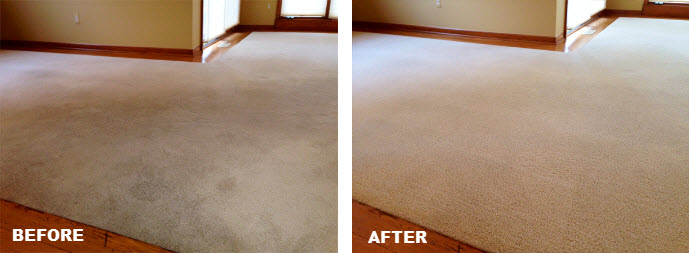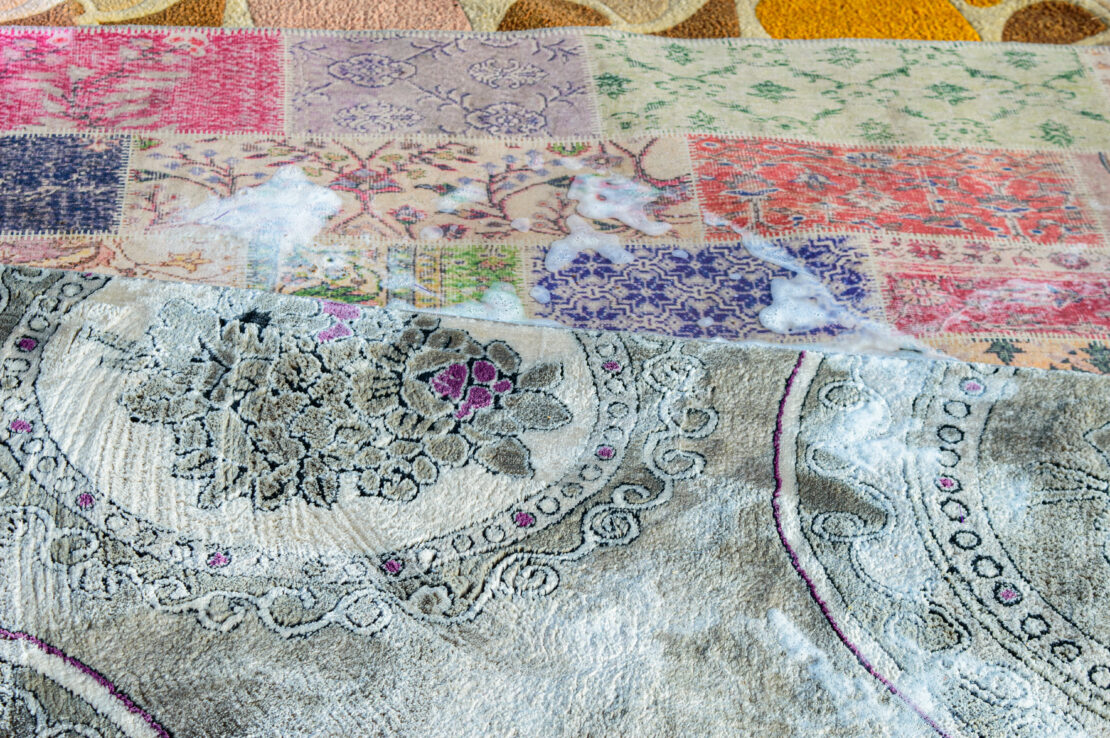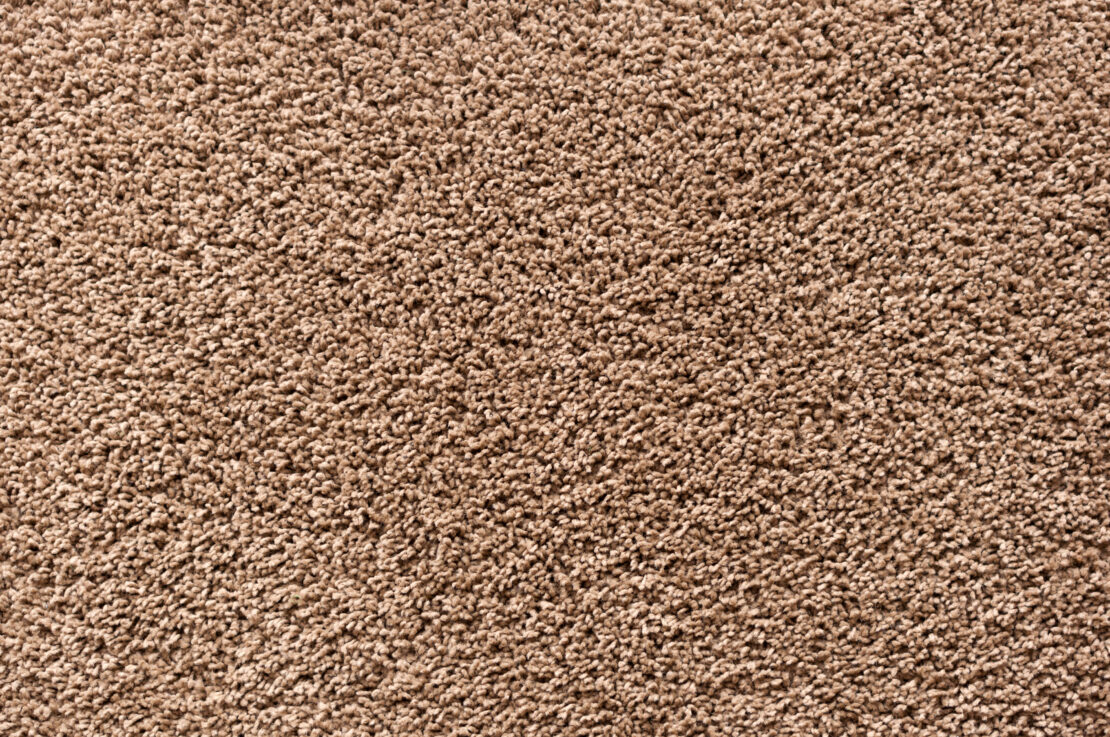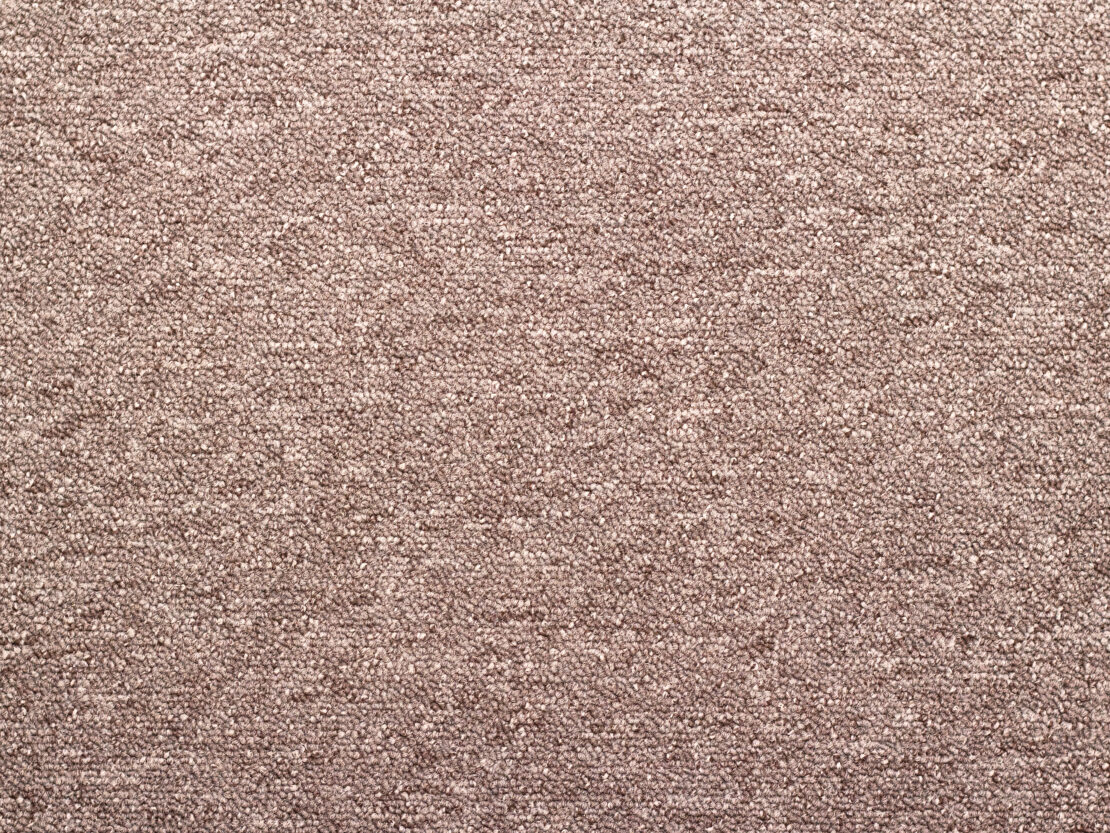
You’d be surprised to know just how dirty your carpet is. While stains are noticeable, a buildup of allergens, bacteria, and other contaminants can easily be missed until one day you start sneezing and wonder what’s happening. And, if you have darker-colored carpet, it can be challenging to see dirt buildup over time because the visual change won’t be super noticeable.
The general rule of thumb for carpets is to have them cleaned at least once a year. However, when it comes to determining frequency, it’s ultimately a question of foot traffic—the more traffic your carpet receives, the more it needs to be cleaned. So, if you have carpeted areas near your front or back doors, they will likely need to be cleaned more than once a year.
The trick is that there isn’t one universal carpet cleaning method to use, and the method you use will vary based on the type of carpet you have.
The Different Cleaning Methods
Shampooing

While not as prevalent as before, carpet shampooing is still used in commercial carpet cleaning applications, especially in restaurants, cafes, and hotels.
In this method, a rotary carpet cleaner or carpet scrubber is used to brush commercial-grade shampoo onto the carpet. The shampoo is allowed to dry before another commercial vacuum is used. While effective, carpet shampooing is by no means gentle, and the stiff bristles of the rotary carpet cleaner can sometimes damage the carpet’s fibers while also leaving behind a filmy residue, if not performed correctly.
Steam Cleaning

Steam cleaning is a less abrasive form of carpet cleaning that primarily uses hot or warm water. It’s environmentally friendly, non-toxic, and can be used with most carpet types.
The process itself is fairly simple. First, the carpet is vacuumed to remove surface-level dirt and debris. In severe cases, a pre-treatment solution may be applied that helps to break down dirt, grease, and other pesky stains.
After surface preparation, a specialized machine generates steam or injects hot/warm water directly into the carpet to remove deep-set dirt and debris. The hot/warm water (or steam) helps loosen significant dirt buildup. Many commercial systems come with a rotary or brush attachment to help further loosen up any buildup.
Once the carpet has been steam cleaned, fans or air movers are placed around the just-cleaned area to remove any moisture. The moisture is the biggest challenge of steam cleaning because if it’s not dried properly, it can cause mold and mildew growth, and potential shrinkage.
Dry Cleaning
Dry cleaning isn’t really considered a deep cleaning method. It’s more of a quick-fix solution and involves using a Perchloroethylene dry compound that is evenly distributed over the carpet. Then, a rotary cleaning machine is used to apply the dry compound onto the carpet, removing the contaminants within the carpet by freeing up the carpet’s fibers. After the dry compound has released the dirt from the carpet, a commercial vacuum removes the dirt and the compound from the carpet.
Dry cleaning should never be done on wool, silk, rayon, carpet, or natural-plant fiber carpets unless you find a compound specifically formulated for one of these fibers.
Bonnet

Like dry cleaning, the bonnet method doesn’t provide a deep cleaning. Instead, it’s meant to capture contaminants on your carpet’s surface. The process relies on a Bonnet Carpet Cleaner, which is a machine with a circular rotating pad or bonnet. A small amount of water is used to release dirt from your carpet’s surface. This quick-drying carpet cleaning process is seen more as a carpet maintenance step for its ability to quickly remove dirt, debris, and contaminants from the top of your carpet’s fibers.
We don’t recommend using the bonnet method on wool, silk shag, Berber, rayon, or plant-based fibers.
Encapsulation

Encapsulation is another fast-drying carpet cleaning method. With encapsulation, a machine similar to a Bonnet Carpet Cleaner is used. However, while the Bonnet Carpet Cleaner only removes dirt from the carpet’s surface, encapsulation goes deeper, although not as deep as the steam cleaning method.
This two-step process relies on encapsulation carpet cleaning solutions. First, the carpet is vacuumed. Next, the encapsulation solution is sprayed onto the carpet. Afterward, a commercial encapsulation system uses rotating brushes to remove the embedded dirt within the carpet’s fiber.
We also don’t recommend the encapsulation method for wool, silk, rayon, shag, Berber, and natural plant fibers.
Carpet Fiber Type
Nylon

Nylon carpet fibers are incredibly durable and can withstand a ton of foot traffic. However, while nylon fibers are strong, they will eventually flatten, making the carpet appear dull and worn. For this reason, nylon carpets should be steam cleaned at a minimum of once a year to bring the fibers back into place.
If you have nylon carpet, avoid the following:
- Using high pH cleaners, bleach, or harsh chemicals which will cause discoloration, stiffness, and potential degradation. Always use a cleaner that has a pH level between 5 and 8.
- Over-wetting the carpet with steam cleaning.
- Excessive scrubbing when shampooing, which can cause the fibers to appear worn out.
- Using high heat during steam cleaning, which can cause distortions in the fiber. Always use a moderate temperature (not above 150 degrees Fahrenheit).
- Overusing carpet powders or deodorizers, which are hard to remove via vacuuming.
- Leaving stains to set. If you notice a stain, clean it with a gentle, patting motion and with a cleaner specifically designed for nylon carpet or a mild dish soap solution. If you leave stains to set, especially if caused by wine or coffee, they will only get harder to remove over time.
Polyester

Polyester fibers provide plenty of comfort, are incredibly soft, and have excellent stain and fade resistance. However, they aren’t as strong or durable as nylon fibers and need more frequent deep cleaning. It’s best to schedule a deep cleaning every six to nine months.
Similar to nylon, polyester carpet shouldn’t be over-wetted or exposed to temperatures above 150 degrees Fahrenheit. In fact, polyester fibers can actually melt if exposed to excessively high temperatures. You should also avoid using high pH and/or solvent-based cleaners, harsh scrubbing or brushing, and overusing carpet powders or deodorizers.
Polyester, especially in high-traffic areas, can also mat over time, so you should also use a carpet rake or brush when you notice flattened areas.
Wool

Wool fibers are incredibly comfortable, soft, and plush, with good stain resistance. However, they are not durable fibers and can become easily stained in high-traffic areas. Additionally, as you probably gathered from the previous section, they generally can’t be cleaned using the Bonnet, encapsulation, and dry cleaning methods. They also easily capture pet dander and pet hair, which means weekly vacuuming is essential, as is a deep cleaning once a year.
Like most carpet fibers, you’ll want to avoid alkaline cleaners and bleach, over-scrubbing, hot temperatures in steam cleaning, over-wetting, and carpet powders. Also, when you’re vacuuming, don’t use a beater bar, which can fray the fibers, and frequently go over high-traffic areas to prevent buildup.
Although steam cleaning can work on wool, we generally don’t recommend it because it can be very easy to over-wet wool, which is even more dangerous because it shouldn’t be left excessively wet for more than 24 hours.
For basic maintenance, you’ll want to vacuum and spot clean when needed with a wool-safe stain remover or a mild dish soap solution. If deep cleaning is needed, use a wool-safe dry cleaning compound and vacuum off any residue, or use the shampooing method with a wool-safe formula. Remember—always blot and never scrub!
Olefin

Olefin fibers are relied upon for their chemical, stain, and fade resistance. However, they are capable of absorbing high amounts of moisture, making cleaning extremely challenging. You should generally deep clean olefin carpet at least once a year.
When deep cleaning, a low-moisture extraction method is often recommended. You never want to use high heat or over-wet it, similar to the other carpet fibers we covered in this post. Other things to avoid include using oil-based cleaners because olefin actually attracts oil, so oil-based cleaners could potentially result in even more dirt buildup. And, when you vacuum, use a high-suction vacuum to help prevent matting.
Triexta

Developed in 2009, Triexta is viewed by many as the ultimate eco-friendly carpet fiber. Its fibers are softer and more stain and mold-resistant than polyester. However, because Triexta has extremely thick and dense fibers, it can easily capture pet hair, dander, dirt, and debris and should be cleaned every three to six months, depending on foot traffic and the general environment (more pets=more cleaning).
As with most carpet types, ensure Triexta carpet doesn’t stay wet for over 24 hours, never scrub the fibers, and avoid harsh cleaners or hot water.
General Care Tips
Vacuum Regularly
Vacuum is the best form of carpet maintenance you can do outside of spot cleaning because it helps prevent buildup. Carpets (of all types) should be vacuumed once a week at a minimum. If you’re a multi-pet household, you may want to increase that to twice a week, especially if people in your household have bad allergies.
Clean Spots Immediately
Always clean stains as soon as you see them, and use a non-toxic, non-abrasive natural cleaner formulated for your carpet type. Use a soft cloth and always blot or pat, never scrub or rub as it can easily damage most carpet fibers. If the stain is pretty bad, allow the solution to set in for around five. The specific cleaner you pick will also have setting time recommendations.
Carefully Select Your Cleaning Solution or Water Temperature
We’ve mentioned this already in the article, but it doesn’t hurt to repeat—always pick a cleaning solution that’s designed for your carpet type, whether wool or nylon and use warm water when spot cleaning or deep cleaning. Most carpet fibers cannot handle hot temperatures like tile or hardwood floors can.
Rotate Furniture Annually
Yes, moving furniture is often a hassle, but so is dealing with excessive buildup. Pet owners are fully aware of the horrors that can be found just by looking underneath a couch or an end table. So, once a year, you should rotate your furniture to catch some of that buildup from the year prior.
Call Professionals When Needed
While each of these general care tips can help you maintain your carpet’s appearance, there are times when you’ll need professional carpet cleaning. This is especially the case when dealing with older carpets, ones with deeply embedded stains and persistent odors, or carpets that have suffered from extensive water damage, mold, or mildew.
And, if you don’t know what you’re doing and are afraid to make a mistake, call a professional anyway because the last thing you want to do is damage your carpet.
Schedule Carpet Cleaning Today
Duo Care is an IICRC-certified cleaning company with over 40 years of experience in commercial and residential carpet cleaning. Whether you need an annual deep cleaning or emergency restoration services after a flood, we’re ready to help. Our numerous 5-star Google reviews are testaments to our commitment to customer satisfaction and quality workmanship.
Contact us today if you would like to learn more about our professional carpet cleaning services or need to schedule a deep clean of your carpet.
